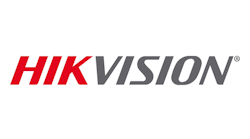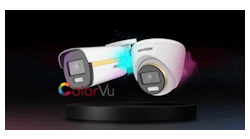If a casino security director is looking to upgrade analog video surveillance to a faster, more sophisticated system with higher resolution images, broader coverage and adequate storage, the common assumption is that the casino security director will settles on IP-based video surveillance. This is not necessarily the truth.
Despite the many advantages of IP-based surveillance systems, gaming security professionals are increasingly opting for video surveillance systems built on analog HD technology that already leverages a typical casino’s vast analog infrastructure.
While “upgrading” to analog may sound counterintuitive, new analog HD systems are high performing, affordable, and they provide exceptional images and storage capabilities uniquely suited to the requirements of casinos. They can be installed relatively easily, require minimal downtime, and have features that enable casino owners to meet complex and diverse regulatory requirements.
Before joining Hikvision as business development manager for gaming, I ran a systems integration business that specialized in gaming for more than 20 years. I have personally witnessed the incredible technological leaps we have made from the days – not all that long ago – when casinos stationed surveillance operators with binoculars on catwalks above the ceilings, or when the first casino camera domes were installed that measured 33 inches in diameter and weighed 70 pounds.
Today, I have seen firsthand how analog HD can save integrators and casino owners significant time and money, while also making the security surveillance operator’s job easier – contributing to a smoother overall business operation of the casino. This translates into better security and profitability for casinos.
The Gaming Vertical: A Different Environment
Casinos are unique installations in many ways, especially in terms of footprint and infrastructure. They are huge environments that never close, literally operating 24/7, 365 days a year. The integrator’s job is complicated further by the fact that casino owners do not want downtime.
Gaming is a highly regulated industry, with regulations that differ widely from state to state. Every casino must meet state regulations or, if it is a tribal casino, National Indian Gaming Commission (NIGC) regulations. Depending on where it is located, a casino may have to meet both state and tribal gaming regulations.
Adding to the complexity, even regulations that have similar language – for example, casino cameras need sufficient clarity to identify patrons or certain storage requirements – are often interpreted differently in different states.
Every state except Nevada requires systems integrators doing work in the gaming vertical to be licensed as well. To be successful, integrators who do casino work need to be subject matter experts; in fact, for the most part, security integrators do not dabble in casino work – they specialize in it. Casino surveillance directors demand that their integrator and manufacturer partners really understand the gaming world.
Profit in Retrofits
Up until around 2006, there was huge growth in the gaming industry, with lots of new construction. Since that time, new construction has slowed, and as a result, the vast majority of casino projects are retrofits and upgrades.
Because casinos operate continuously, installing new video platforms is complicated by the fact that the integrator must keep the old system up and running while the new system is being installed. This aspect is much easier and faster with analog HD compared to IP-based technology.
The first and most obvious reason is casinos are reluctant to shut down areas of an active casino to re-pull cable. Re-installing new cameras often requires patching holes left from legacy analog cameras whose footprint are much larger than IP cameras.
During a new system deployment, the surveillance director will generally close down one section of the casino, which also requires prior approval from the local gaming commission. There is pressure to quickly complete the installation, because closed sections obviously do not generate revenue.
Analog HD enables integrators to install the upgraded solution much faster because no new cabling is required. By leveraging existing RG59 cable, the installation is more efficient; and cost savings are realized from the faster install as well as a significant savings from cable replacement and associated labor – which in large casinos can represent 25 to 30 percent of the overall labor cost. A more efficient installation also enables the casino to re-open closed sections faster.
As mentioned, a surveillance director needs prior approval from a gaming commission to shut down parts of the casino. Before the project begins, the surveillance director also needs an approved transition plan that illustrates a timeline for the replacement of each camera. Manufacturers that specialize in gaming should be able to offer guidance and best practices to integrator partners for casino camera schedules and transition plans.
“Old” Analog vs. Analog HD
As mentioned, the true benefit of analog HD is its ability to leverage existing infrastructure, resulting in little downtime for the casino. For example, in the case of a casino looking to upgrade a 1,000-camera system, the cable costs alone (assuming average run per camera being 200 feet) would be approximately $50,000 and the labor to pull in new cabling would be approximately $150,000 in a non-union environment.
Other significant savings can be found in how analog HD solutions are licensed. Unlike traditional VMS solutions where each IP camera represents a camera license, analog HD is usually licensed per encoder. Using the 1,000-camera casino as a further example, traditional VMS camera licensing can be as much as $120,000 – as much as 50 percent more than per-encoder licensing.
These savings, combined with reduced networking costs, lower camera costs, shorter casino-section downtimes, and various other factors quickly averages to a minimum of a 25 to 30 percent savings on the overall upgrade project cost over an IP solution.
Importantly, reaping these savings does not require the casino to compromise on higher resolution video. For example, Hikvision currently offers 5MP resolution at 30 frames per second over coaxial cable. By the end of 2018, analog HD technology will be capable of 4K resolution at 30 frames per second.
With older analog systems, surveillance operators can barely read denominations on the cards, but with analog HD, they can read denominations and suits. The higher resolution analog HD cameras also enable operators to determine how many checks are in a stack, something that is impossible with older analog systems. Furthermore, they can detect a player capping a bet, bending the corner of a card, and many other typical card-game manipulations. Accuracy in this area is extremely important to the casino – they want to detect cheating, but they do not want to unnecessarily stop play at a table.
Greenfield Applications
While analog HD is a no-brainer for retrofits, there is an argument to be made that analog HD is an excellent solution for greenfield casino projects as well.
Coax (and 18/2 for power) costs more initially than CAT5e cable; however, CAT5e cable can only go 325 feet, while coax can stretch from 1,000 to 1600 feet. Integrators may even be able to eliminate the need for multiple Intermediate Distribution Frame (IDF) closets throughout the gaming floor, thus saving on construction costs and energy as well.
The bottom line is that longer cable runs allow for fewer IDFs, power supplies and signal amplifiers, which offsets the cost of the cable. These savings, coupled with the licensing savings, makes analog HD a smart solution for new construction.
By betting on analog HD, casinos can save between 15 to 25 percent on greenfield deployments. Using the same 1,000-camera non-union casino use case, here is the cost breakdown for a greenfield installation, IP vs. analog HD:
|
Description |
IP Cost |
Analog HD Cost |
Cost Difference |
|
|
Wire/Cabling |
$50,000.00 |
$125,000.00 |
$(75,000.00) |
|
|
Labor for cable |
$150,000.00 |
$200,000.00 |
$(50,000.00) |
|
|
VMS |
$120,000.00 |
$12,500.00 |
$107,500.00 |
|
|
WMS Servers/Analog Encoders |
$110,000.00 |
$80,000.00 |
$30,000.00 |
|
|
Network |
$140,000.00 |
$50,000.00 |
$90,000.00 |
|
|
IDF Cost |
$120,000.00 |
$30,000.00 |
$90,000.00 |
|
|
Storage |
$380,000.00 |
$280,000.00 |
$100,000.00 |
|
|
Cameras |
$620,000.00 |
$450,000.00 |
$170,000.00 |
|
|
Camera Labor |
$300,000.00 |
$300,000.00 |
$- |
|
|
All other misc. equipment |
$300,000.00 |
$300,000.00 |
$- |
|
|
System Total |
$2,290,000.00 |
$1,827,500.00 |
$462,500.00 |
|
Scott Bartlett is the Gaming Business Development Manager for Hikvision USA. He spent more than 20 years running an integration business that specialized in gaming and has completed work in hundreds of casinos in North America and around the world. Request more info about Hikvision USA at www.securityinfowatch.com/10215768.



